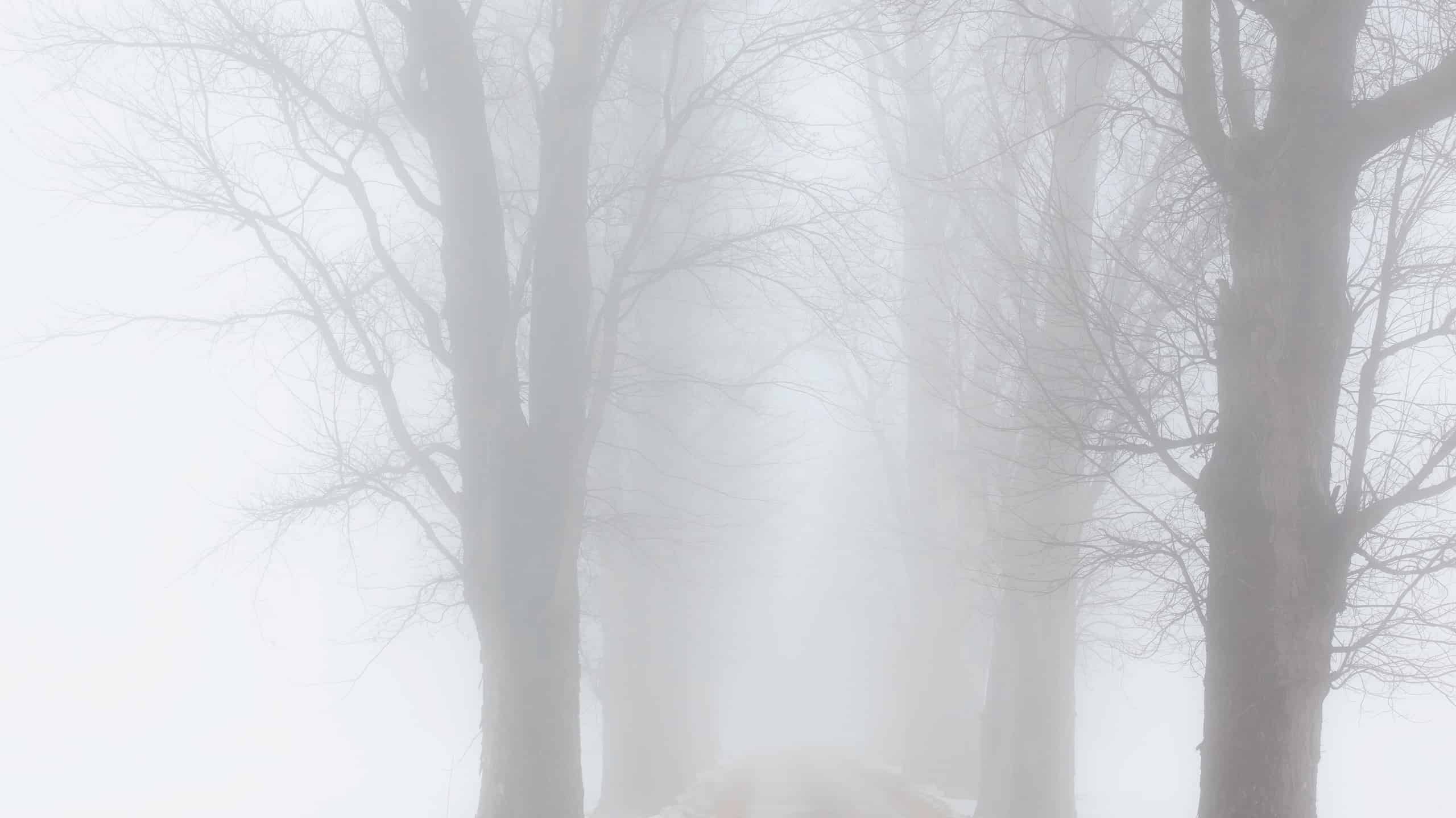April blizzards are not common in Illinois, but they do occur sporadically. As a result, every few years, the state gets covered with a white blanket that buries the blooming plants, flowers, and buds. However, these snowstorms are generally mild, and the snow that falls is barely enough to shovel. But, the biggest April snowstorm in Illinois history delivered large quantities of snow and brought cities and towns in the state to a standstill. Continue reading to learn more about this blizzard and how it affected the residents of Illinois.
What Was the Biggest April Snowstorm in Illinois History?
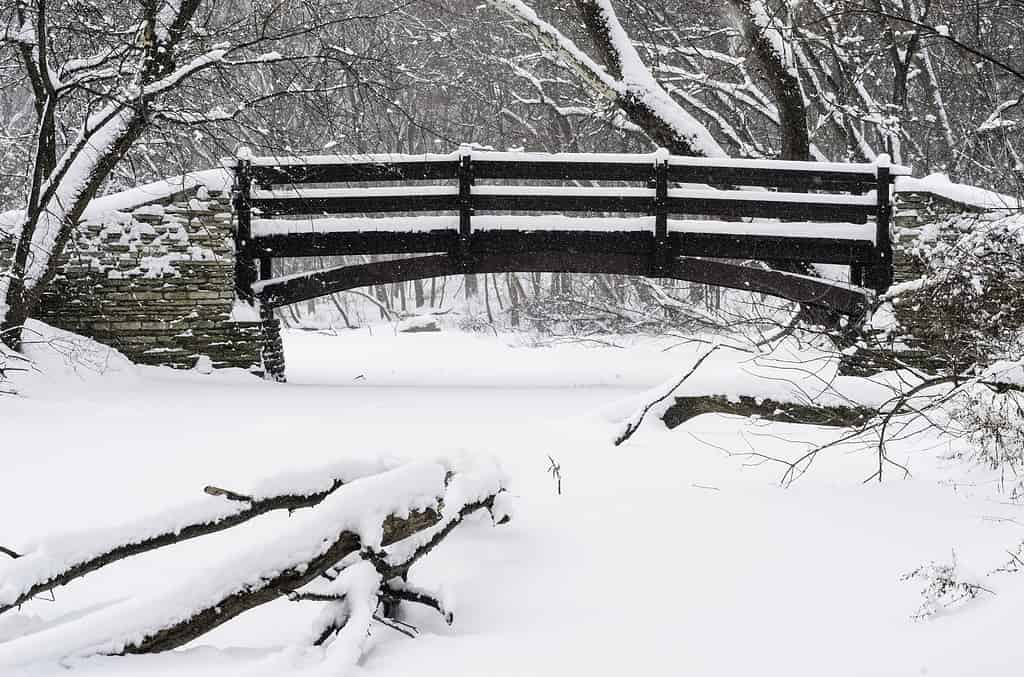
Winter snowstorms in Illinois are not common in April.
©ESB Basic/Shutterstock.com
The biggest April snowstorm in Illinois history occurred in Chicago from April 1st to April 2nd, 1970. It broke the record as the city’s heaviest April snowstorm, dumping 10.7 inches of snow onto the windy city. The storm’s 50 mph wind piled the heavy, wet snow into massive drifts, and the sky was lit up by lightning, followed by rumbling thunder. Unfortunately, this wasn’t the first storm that week. A similar storm hit Chicago between March 25th to 26th, which delivered 14.3 inches of snow.
Impact of the Snowstorm
Because the snow was so heavy, it damaged shrubs, trees, and powerlines. In addition, it brought traffic to a standstill due to poor visibility and icy roads. Furthermore, Chicago O’Hare was closed for several hours until the worst was over. Finally, the snowstorm was so bad that the annual preseason Cubs vs. White Sox Series had to be relocated to Tulsa, Oklahoma.
What is the Typical April Weather in Illinois?
The Illinois snowstorm of April 1970 was a freak blizzard because storms of that magnitude don’t usually occur in spring. For example, below are tables that show the average April snowfall in different areas of Illinois:
Central Illinois
| Place | Inches of Snow |
|---|---|
| Bloomington | 0.0 |
| Champaign | 0.3 |
| Charleston | 0.3 |
| Danville | 0.0 |
| Decatur | 0.4 |
| Kankakee | 0.3 |
| Ottawa | 0.4 |
| Peoria | 0.5 |
| Springfield | 0.3 |
Northern Illinois
| Places | Inches of Snow |
|---|---|
| DeKalb | 1.3 |
| Dixon | 0.6 |
| Freeport | 0.8 |
| Moline | 1.1 |
| Rockford | 0.9 |
Southern Illinois
| Places | Inches of Snow |
|---|---|
| Belleville | 0.0 |
| Carbondale | 0.0 |
| Mt Vernon | 0.0 |
Chicago Area
| Place | Inches of Snow |
|---|---|
| Aurora | 0.6 |
| Chicago Botanical Garden | 1.1 |
| Chicago Midway Airport | 1.0 |
| Chicago O’Hare Airport | 1.3 |
| Elgin | 0.8 |
| Joliet | 0.1 |
How Do Late-Season Snowstorms Impact Wildlife in Illinois?
Many people don’t know how substantial Illinois wildlife is because of many wide open spaces in the state and even around Chicago. Not to mention Lake Michigan, which is teaming with aquatic wildlife. As a result, Illinois is home to thousands of wild organisms, like fish, mammals, birds, insects, reptiles, amphibians, and more. But how do these late-season snowstorms affect wildlife living in Illinois? Well, the following five animals have different techniques and adaptations which help them survive the cold:
- The state bird, the Northern Cardinal
- Bison
- Massasauga
- Striped bark scorpion
- Thirteen-lined ground squirrel
Northern Cardinal
The northern cardinal tends to stay close to its home breeding ground, and unlike many bird species, they do not migrate. Instead, when it gets cold, they seek refuge in dense branches of conifer trees like pine, cedar, and fir. As a result, they prefer to stay close to their preferred foraging spots, especially gardens with well-stocked feeders. So, how do they survive the cold? Once the temperature starts to drop, cardinals typically gather in foraging groups, which increases their chances of finding food. The more food they can find, the better their chance of survival.
When cardinals roost in evergreen foliage, they puff their feathers up, which creates a bubble of air around the body, keeping them warm. Furthermore, these birds stay warm by shivering, making it possible to keep their body temperatures stable. However, both these adaptations use large amounts of energy and can only be done in short bursts. Lastly, cardinals can lower their body temperature by 3 to 6° F temporarily. Therefore, on the coldest nights, they can put themselves into a physical state of inactivity, which conserves energy.
But what happens when an April snowstorm hits Illinois? By April, the cardinals’ food source should slowly be returning to the area. But, a freak blizzard can delay getting the vital nutrients they need that were unavailable throughout the winter.

When cardinals roost in evergreen foliage, they puff their feathers up, which creates a bubble of air around the body, keeping them warm.
©iStock.com/Diane079F
Bison
When temperatures drop, bison develop thick, woolly coats that insulate them from harsh winds and freezing weather. In addition, their skin thickens as a response to the cold air, and their bodies store fatty deposits, which aids in insulation. As a result, their thick coats and extra padding can keep them alive when exposed to a brutal snowstorm that would kill many other livestock. These massive animals also use their heads and powerful neck and shoulder muscles to plow and forage through snow up to four feet deep! Lastly, bison have an adaptation that slows their metabolism and decreases their nutritional needs to conserve energy.
While bison are well-equipped for winter, pregnant females lose a significant amount of body mass during winter. As a result, during the late stages of gestation, females will mobilize fat reserves to meet increasing nutritional demands. Unfortunately, this is a trade-off for immune function, making pregnant bison more susceptible to disease. This, coupled with extreme weight loss, can result in death, which is why unpredictable weather patterns can severely affect bison.

Midewin National Tallgrass Prairie in Illinois is home to Bison, various birds, aquatic species, reptiles, and amphibians
©iStock.com/EJ_Rodriquez
Massasauga
The massasauga is a local migrant, meaning they may travel up to 1.6 miles between summer and winter habitats. These snakes prefer low-lying, open habitats with poor drainage during winter. For example, they depend on crayfish burrows or other fissures to obtain unfrozen groundwater during brumation. However, they also use these burrows during spring and summer to hide from predators. After brumation, the massasauga typically emerges in April and starts to feed on small animals and soak up the sun.
During the warmer months, these snakes move upland near prairies, dry fields, or meadows, where they will spend their time foraging. Due to the fact that massasaugas are cold-blooded, they can’t regulate their body temperatures. So, when the temperature drops, they must find refuge by burrowing into the ground or seeking shelter under rocks or logs in caves, tree stumps, basements, garages, crawlspaces, sheds, barns, car engines, or wood piles. Unfortunately, a late-season snowstorm can drive these snakes into urban areas as they search for shelter. As a result, they often land up in people’s homes and are usually killed.
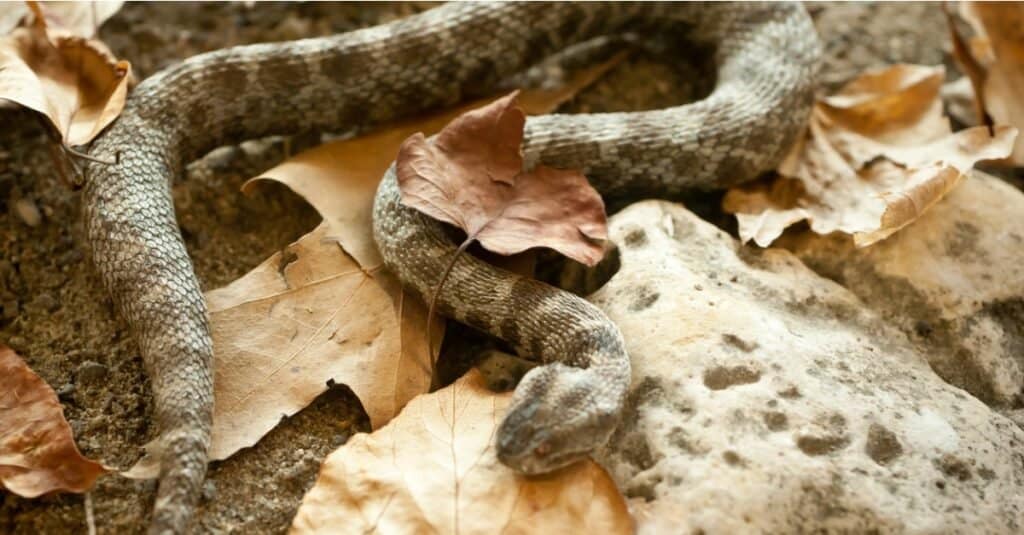
The Massasauga
Rattlesnake
typically emerges in April and starts to feed on small animals and soak up the sun.
©iStock.com/Westhoff
Striped Bark Scorpion
Once fall arrives, striped black scorpions will start looking for places to hibernate. This is usually when people begin to find scorpions in their homes. Scorpions will typically crawl into dark places like between floorboards and walls, in shoes, and in attics. They will stay in these spaces all winter and emerge in summer. So, it is common for homeowners to find infestations in their homes as the weather gets warmer.
Striped bark scorpions remain active as long as it’s warm, so if there is a late-season snowstorm, they will quickly find a safe place to hide until the storm passes. Unfortunately, if they choose residential homes as their shelter, there is an increased risk of the homeowners killing them.
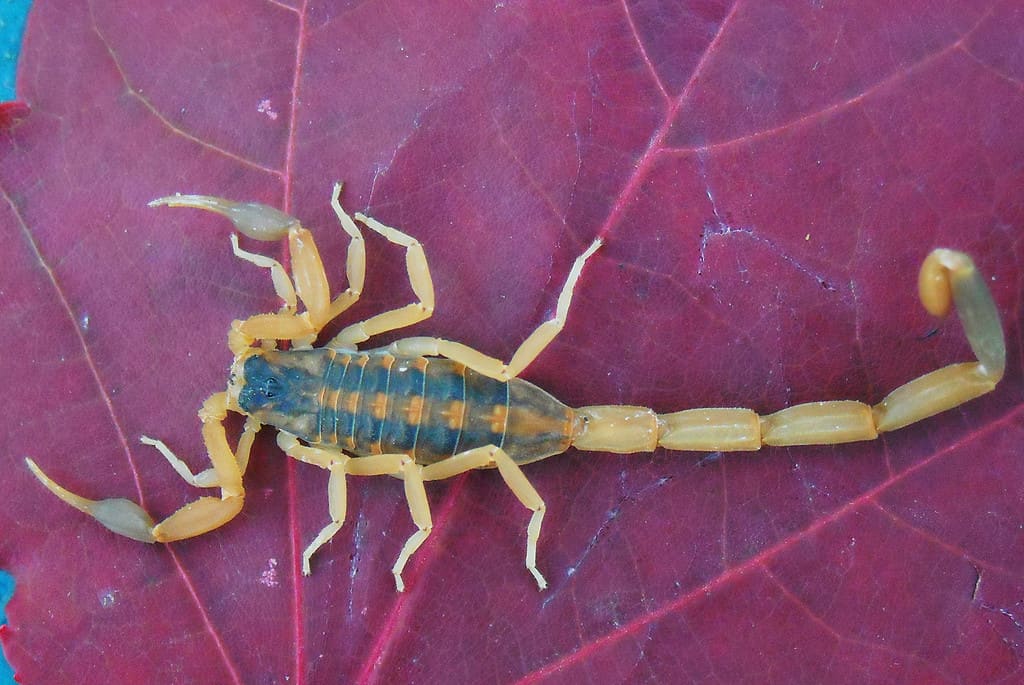
Striped bark scorpions seeking shelter from snow may enter homes.
©Matt Levi Media/Shutterstock.com
Thirteen-striped Ground Squirrel
When winter arrives, the thirteen-striped ground squirrel retreats to its underground shelter and curls into a snug ball, entering a state of hibernation. When hibernating, their breathing slows from 150 breaths per minute to one breath every five minutes, only using 2% of their normal oxygen. However, they don’t go into total hibernation. Instead, thirteen-lined ground squirrels will briefly come out of hibernation to eat the food they have stored and urinate. Unfortunately, a freak blizzard in April will make it harder for these squirrels to find food. And after a long winter, being malnourished and weak, this could be the difference between life and death.
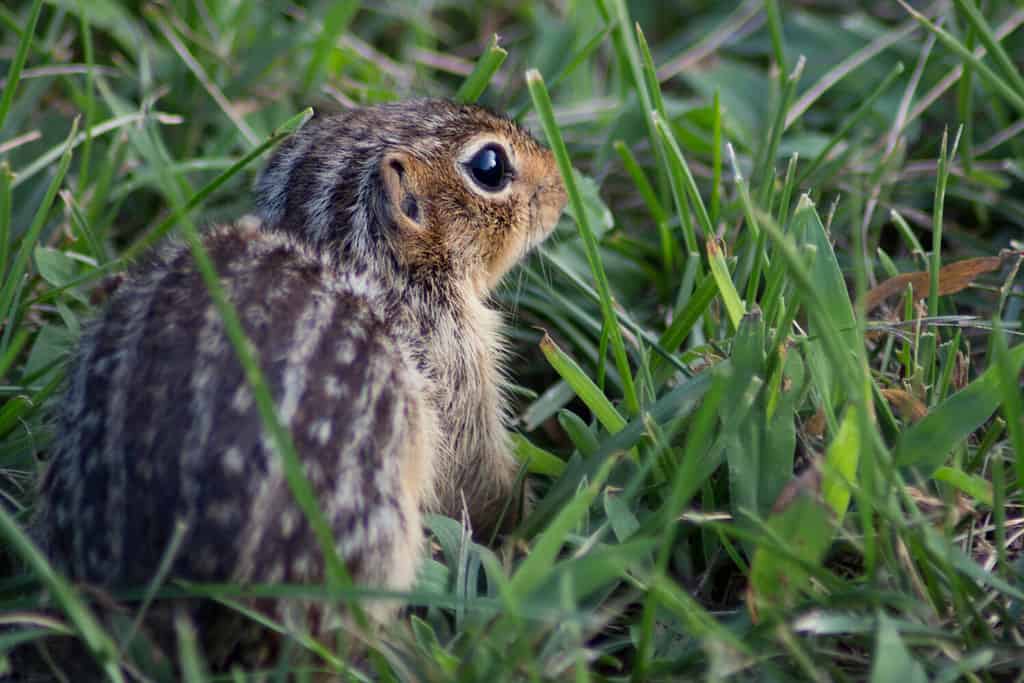
An April snowstorm can make it difficult for the thirteen-striped ground squirrel to find food.
©Benjamin Nietupski/Shutterstock.com
Thank you for reading! Have some feedback for us? Contact the AZ Animals editorial team.

